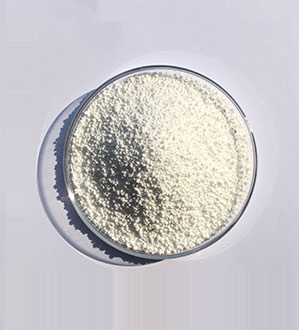
CH3COONa
Packing:Anhydrous sodium acetate is a White powder or granule. These two products, which differ in appearance, are mainly chemical in nature and differ only in physical form. The granular form has dust-free, improved wettability, higher reactivity, higher density and improved fineness.
Grade
Anhydrous sodium acetate has pharmaceutical grade, food grade, industrial grade, E262 (European) and reagent grade.
Specification
| Item | Pharmaceutical Grade | Food grade | Industrial grade | E262 (Europe) | Reagent grade |
| Content% | 99.0-101.0 | 99.0-101.0 | 99.0-101.0 | 99.0-101.0 | 99.0-101.0 |
| Appearance | White, odorless, soluble, crystalline powder | ||||
| 5% pH at 20°C | 7.5-9.0 | 7.5-9.0 | 7.5-9.0 | 8.0-9.5 | 7.5-9.0 |
| Water insoluble %≦ | 0.05 | 0.05 | 0.05 | 0.01 | |
| Heavy metals (calculated as lead%≦ | 0.001 | 0.001 | 0.001 | 0.001 | |
| Chloride (Cl)%≦ | 0.035 | 0.1 | 0.002 | ||
| Phosphate (PO 4 )%≦ | 0.001 | 0.001 | |||
| Sulfate (SO 4 )%≦ | 0.005 | 0.05 | 0.003 | ||
| Iron (Fe)%≦ | 0.01 | 0.001 | |||
| Moisture (loss on drying 120℃, 240min)%≦ | 1.0 | 1.0 | 1.0 | 2.0 | 1.0 |
| Free base (as Na 2 CH 3 )%≦ | 0.2 | ||||
| Potassium compounds | Pass the test | ||||
| Arsenic (As)%≦ | 0.0003 | 0.0003 | |||
| Calcium (Ca)%≦ | Pass the test | 0.005 | |||
| Magnesium (Mg)%≦ | Pass the test | Pass the test | 0.002 | ||
| Mercury (Hg)%≦ | Pass the test | 0.0001 | |||
| Lead (Pb)%≦ | 0.0005 | ||||
| Reducing substances (calculated as formic acid)%≦ | 0.1 | ||||
| Volatile Organic Compounds | Pass the test |
Pharmaceutical grade indexes comply with : USP 27 (reagent specifications)
all grades comply with : USFood Chemicals Codex5/EC purity standards (as described in E262)
Test method
Test details are available upon request.
Packaging
The packaging of anhydrous sodium acetate is a paper-plastic composite bag.
Storage
Anhydrous sodium acetate should be stored in its original packaging or in a suitable airtight container in a dry and clean place. The storage conditions are generally best in places where the temperature changes little and is not easy to be humid. The product is prone to agglomeration when in contact with water or other liquids, and should not be stacked on trays. Under normal operating conditions, anhydrous sodium acetate will not cause any health hazards. Necessary precautions must be taken to avoid solid or liquid contact with skin or eyes. Under good ventilation conditions, high density exposure to air should be avoided.
First Aid Measures
Eye Contact: In case of contact with eyes, wash immediately with plenty of water, keep eyes open if necessary, seek medical attention.
Skin Contact: Wash contaminated clothing with water and wash clothing before wearing next time.
Ingestion: Rinse mouth with water, seek medical attention.
Fire risk
Sodium acetate does not pose a fire hazard.
Application
It is used in the field of medicine, as a buffer in the photosensitive photography industry, and as an animal feed additive to improve milk production efficiency. It can also be used in the printing and dyeing industry, polymerization catalyst, polymer stabilizer, flavoring agent, and the production of carboxyl oxime for hydrometallurgy.
Physiological properties
Contact of solid or liquid with eyes may cause irritation and sensitization. Repeated skin contact may cause slight pain. Smoking in large quantities can cause infections of the nostrils, throat, and upper respiratory tract.